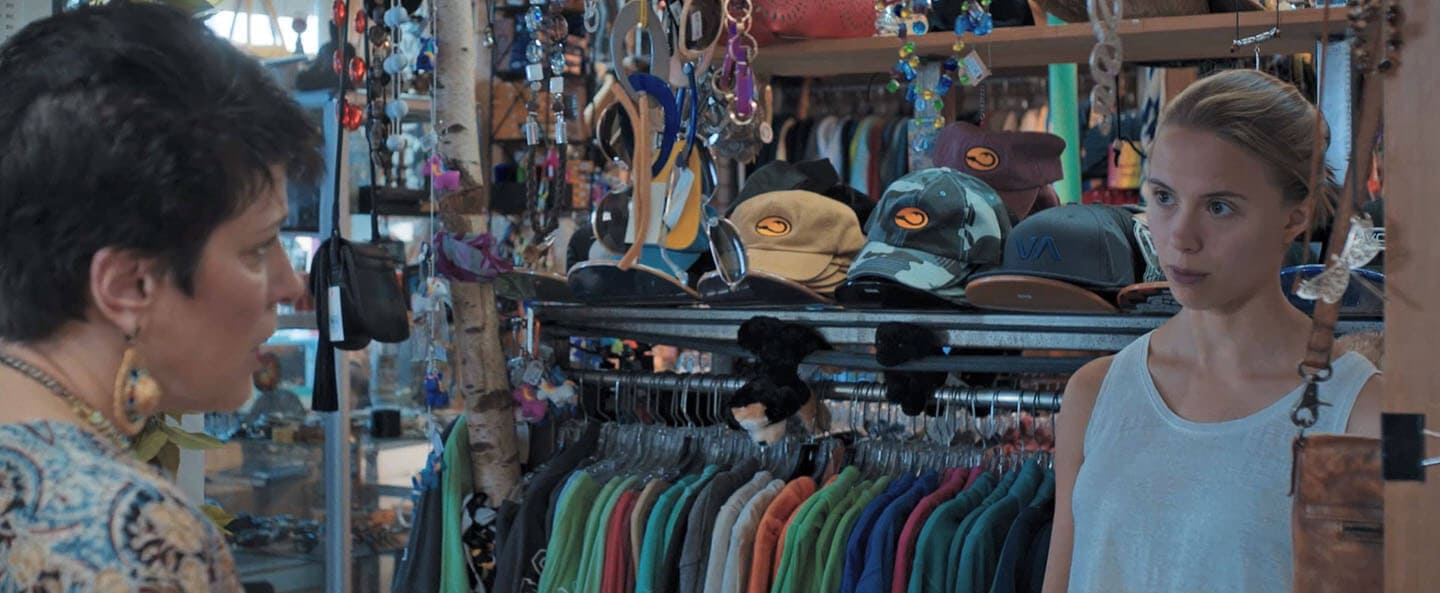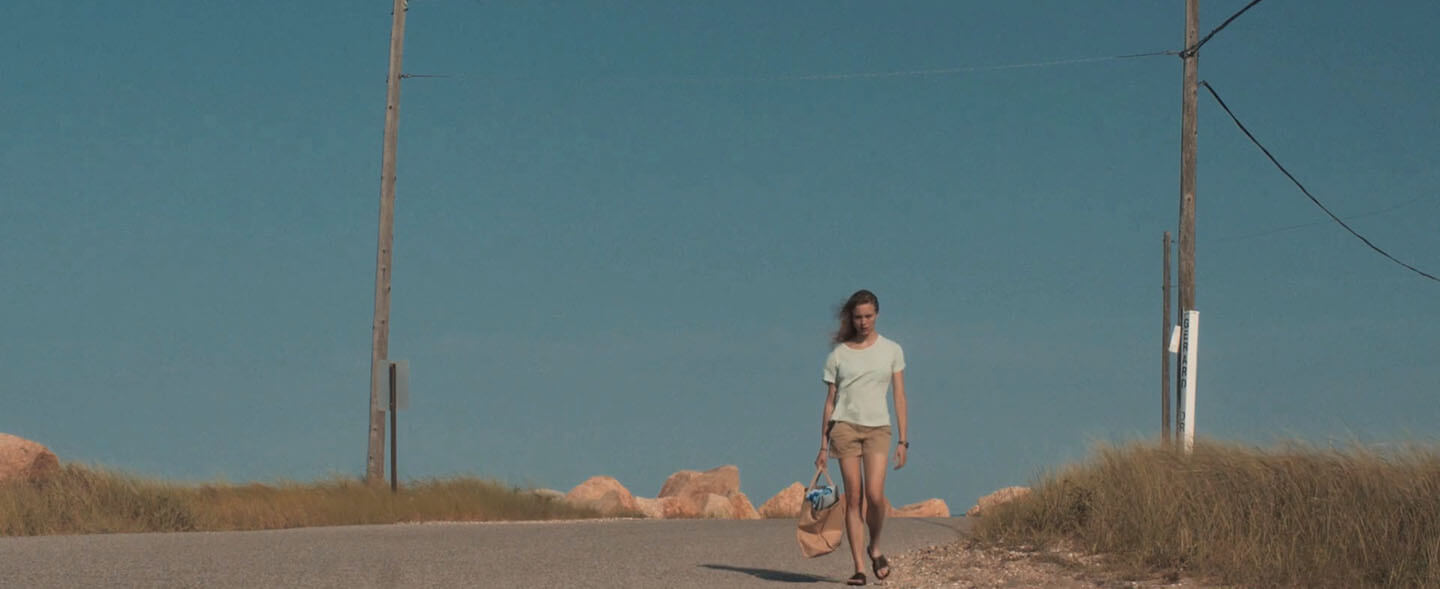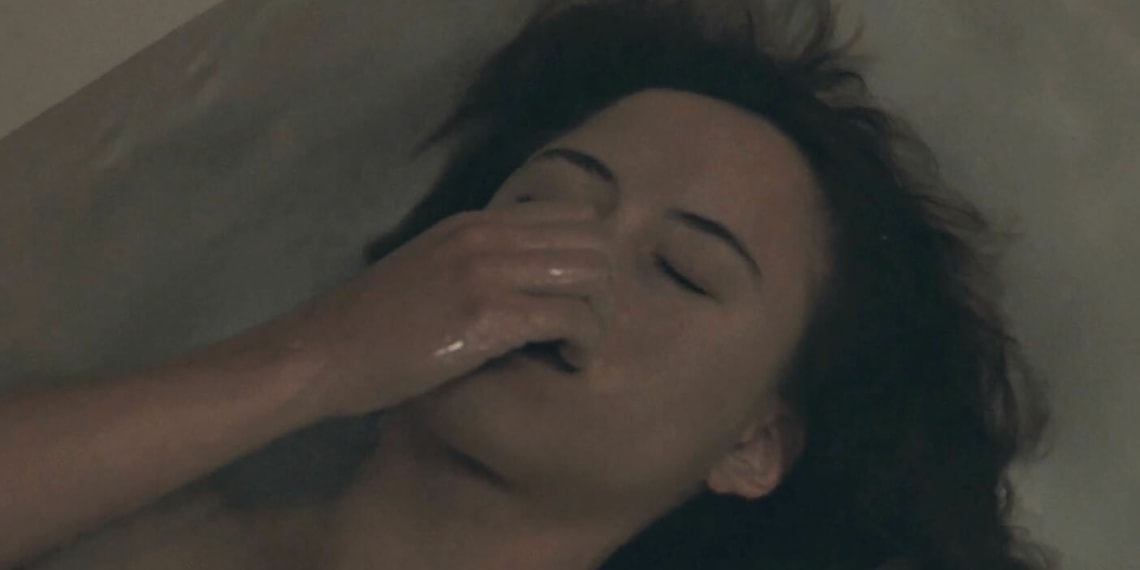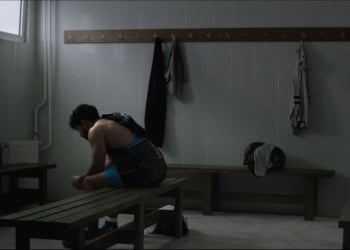To those unfamiliar with Victoria DeMartin’s work, it does not take more than a few seconds into Skindiving to recognise that this is the work of an accomplished artist. The 18-minute film follows Caitlin (Laura Piccoli), effortlessly conveying her inner state through striking, evocative visuals in a way that makes words unnecessary, and the film does indeed make dialogue a secondary concern.
It is hard to precisely point out just when and what it is made clear that this is a character who has consciously donned the garb of a simple life, but the audience becomes aware of it fairly early on. Through the routine of Caitlin’s daily life—mainly her job at a seaside store and going diving—the film establishes that one, the sea is her respite, and two, there are things she needs respite from.

When the past does inevitably catch up with her (in the form of an ex and a friend), it shakes her up, and Piccoli portrays it with a restraint that speaks volumes of the persona her character left behind. The return of her friend (Lori Tischfield) throws the door to her old life wide open. Posh people, yachts, work parties and contrived politeness. In contrast, the empty, trailing spaces that seem to surround her in her home convey that Caitlin, without anyone knowing, drags the weight of an unpleasant past, which, as we now learn, is inescapable too. She moves as though unwilling to make eye contact, clearly evading the present as much as she does the past.

The absence of a score and the recurring sound of the water works to put the audience in Caitlin’s shoes: we experience her world as she experiences it and we find the same comfort in the sea as she does. The film concludes with an abruptness that requires a moment to fully come to terms with. Here, the film uses music. And alternating between sound and silence, one experiences the same unbearable suffocation that Caitlin walked away from that first time.
Watch Skindiving Short Film
Skindiving: Storytelling Through Silence
-
Direction
-
Cinematography
-
Screenplay
-
Editing















